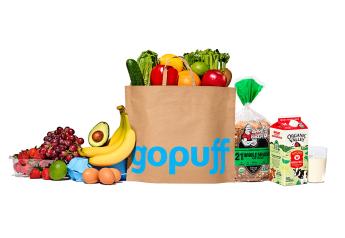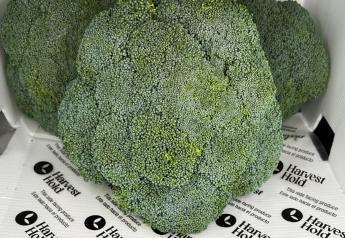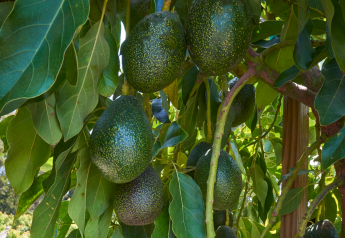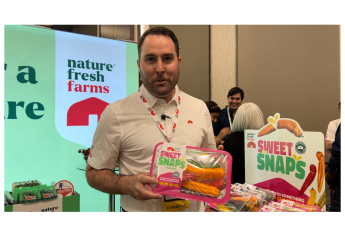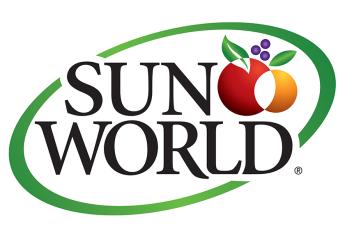Ohio suppliers ready for heavy retail sales this season
Packer Interview - Alex DiNovo July 14
There may be a pandemic on, but produce growers and distributors in Ohio say they’re in robust health.
“I’m really happy with where we’re at,” said Alex DiNovo, president and COO of Columbus, Ohio-based wholesale distributor DNO Produce.
The company, which serves schools and other foodservice clients, has had to adjust since the new coronavirus COVID-19 brought its full fury to the Buckeye State in late March, but it’s on the right path, DiNovo said.
“We’re going to be in an excellent position when schools come back, whether it’s regular, remote or some sort of hybrid,” he said.
“We’re well-positioned (so) that we’re going to be in a good position when school comes back in the fall.”
School clients include universities, DiNovo said.
“Universities are going to be looking to get labor out of their own cafeterias; we’re standing by, ready to provide grab-and-go items there. We’re in the right place at the right time, I think.”
Ohio-grown produce always has been a big seller, but in the shadow of a pandemic, local means even more to consumers across the state, DiNovo said.
“I think that people want to help out their neighbors,” he said.
“Eating local” is like “compound interest,” because consumers are spending money that stays close to home, DiNovo said.
“If you’re buying from a farmer 50 miles down the road, he’s paying his associates, and they’re going to shop locally; there’s gonna be tax dollars that flow back into the economy,” he said. “It’s almost a flywheel-type effect.”
Proximity important
Another benefit of local produce is that it is grown nearby, DiNovo said.
“I think people also noticed some supply disruptions from markets from stuff grown farther away,” he said. “People want to keep things closer.”
Ohioans seem to be buying local in increasing volume, said Loren Buurma, partner in Willard, Ohio-based Buurma Farms Inc.
“Chain store traffic seems to be up; demand has been good,” he said.
That’s good news for all local growers, said Alex Buck, president of the Fruit Growers Marketing Association, Newcomerstown, Ohio.
“Local is by far the leading driver of sales,” he said.
“More and more retailers are wanting to share our growers’ stories with consumers and embrace the farmers in our communities. Local distributors are shipping our fruits and vegetables to restaurants within 24 hours of harvesting. We love how much our communities care about supporting our farms and communicating how important it is to have fresh local produce.”
Buurma’s summer deal got underway early in June — about a week late, due to weather issues — with radishes. Zucchini, squash and cilantro followed. Sweet corn was scheduled to get underway around July 20, Buurma said.
The pandemic did cause a bit of a cutback, though, Buurma said.
“We reduced things a bit this year because of fears from COVID,” he said. “Any excess acres, we cut. We have enough to cover contracts.”
It’s a time to “play to the vest,” he said.
“Nobody really knows what’s gonna happen, and it’s not over with,” he said of the pandemic. “Just about the time things start opening up, they shut bars in Florida.”
Everything at North Fairfield, Ohio-based D.R. Walcher Farms and Willard-based Holthouse Farms was looking good, said Ken Holthouse, general sales manager and co-owner of both operations.
“Everything is looking healthy; we’re getting adequate rainfall,” he said. “From the vegetable-growing side, the start is normal — maybe a week behind.”
If there is any difference, it may be a bit more packaged product, due to COVID-19, Holthouse said.
“There’s a leaning towards that,” he said. “We heard some saw an uptick in bagged product and less in bulk.”
However, store employees with whom he has conversed have said it has been “kind of business as usual,” Holthouse said.
High demand
Demand for zucchini, cabbage, yellow squash, cucumbers and sweet corn “has been outstanding,” said Kirk Holthouse, partner at Holthouse Farms.
“Prices are well above normal,” he said.
Higher prices came as a surprise, particularly with COVID-19 around, he said.
“Everybody kind of thought demand for fresh vegetables would be down during this time,” he said.
“I think there’s kind of a combination of less merchandise being grown and more cooking at home.”
The pandemic has impacted foodservice-heavy suppliers, and a thinner retail field has left fewer sales alternatives, said Jamie Sanfillipo, partner with Columbus-based Sanfillipo Produce Co. Inc.
“It’s a weird time,” he said. “The problem is, the days of the IGAs are gone. Everything now, when it comes to regular grocery stores, you have to run everything through a commissary and they do their own buying. The days of the store drops are all gone.”
Buck agreed that packaged product seemed to be gaining momentum.
“Retail is still very strong but consumer demand is toward packaged products rather than bulk items,” he said.
“We had several promotions set up in April/May for our club varieties that retailers had to postpone to focus on replenishment of consumer panic buying. Our club apples had to be redirected to alternative markets instead of fresh market retail that should have been a great source of late season income for the growers. However, we are very optimistic that this will turn around for next apple season.”
Wholesalers count on Ohio product, said Tom Sirna, president of Ravenna, Ohio-based distributor Sirna & Sons Produce.
“Our area has provided us with access to many growers who can supply us with local product during that season — we are very fortunate to be able to extend our product lines with these options during the summer months,” he said.
“Additionally, Ohio has a large Amish settlement who can supply exceptional products to us as well that our customers enjoy.”
That seems to be the case this year, too, Sirna said.
“We see the interest of consumers in produce continuing to grow, with people looking for healthier food options at restaurants, grab-and-go stands, and other outlets,” he said.
“We can only hope that this interest continues to increase in the midst of the COVID-19 crisis.”
Kroger (53 stores), Meijer (17) and Walmart Supercenters (30) remained the dominant grocery chains in the Indiana-Ohio region, with respective market shares of 38.5%, 27.6% and 19.85%, according to the Shelby Report.
Whole Foods (three stores) was next, at 2.82%.
The Packer's COVID-19 Coverage
The Packer's Wholesale Coverage
The Packer's Produce Retail Coverage


